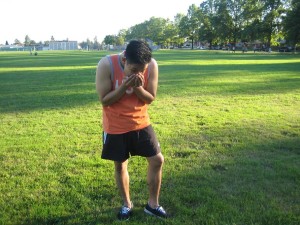Some individuals end up with symptoms of mango allergy after consumption of the fruit. As a popular tropical fruit in areas with warm climates, mangoes can be enjoyed as a fresh fruit, as juices, blended in smoothies and shakes, jams and even pickled and dried.
Despite the popularity of mangoes, mango allergy reactions are not common. Nevertheless, the types of reactions that can occur after consumption of mangoes occur in various forms.
What are the forms of mango allergy reactions?
Contact dermatitis

Oral allergy syndrome is an IgE-mediated reaction that is similar to one that causes anaphylaxis but with mild symptoms such as mouth itchiness, burning and fullness.
This is a common reaction that can occur after consuming mangoes. Contact dermatitis strikingly resembles a poison oak rash that typically affects the face in just a few hours of consuming the fruit and lasts for a few days.
The rash often appears as small-sized, itchy blisters on the skin that might drain and peel over in the next few days. The cause of the reaction is not IgE antibodies but by certain white blood cells that react to certain chemicals present in the mango peel, tree bark and fruit below the peel.
Urushiol is the chemical present in poison ivy, poison oak and poison sumac, thus those who are sensitive to exposure to these plants are likely to end up with contact dermatitis to mangoes.
Even though this reaction is not dangerous, it can be annoying and uncomfortable. The treatment involves topical or systemic corticosteroids depending on the severity of the reaction.
Oral allergy syndrome
Oral allergy syndrome is an IgE-mediated reaction that is similar to one that causes anaphylaxis but with mild symptoms such as mouth itchiness, burning and fullness. The symptoms usually manifest almost right after consuming fresh mango and eventually resolves without treatment after a few minutes.
This type of mango allergy reaction manifests as a result of similarities between the proteins in the fresh fruit and the pollen or latex protein. If oral allergy syndrome occurs due to pollen allergy, the individual is likely to be allergic to either birch pollen or mugwort pollen. Additionally, latex allergy can also trigger the symptoms after eating mangoes.
Anaphylaxis
This is a severe allergic reaction due to the IgE antibodies. Those who have this type of mango allergy reaction experience symptoms right after ingesting the fruit and can include the following:
- Chest tightness
- Wheezing
- Shortness of breath
- Urticaria/hives and angioedema
The management of these reactions are similar to other forms of severe food allergies. A diagnosis for this reaction is done via a skin test or blood test.
Avoidance of the mango fruit is required for those who have experienced anaphylaxis after eating mangoes. Nevertheless, there are other foods that cross-react with mangoes including pistachios and cashews.

